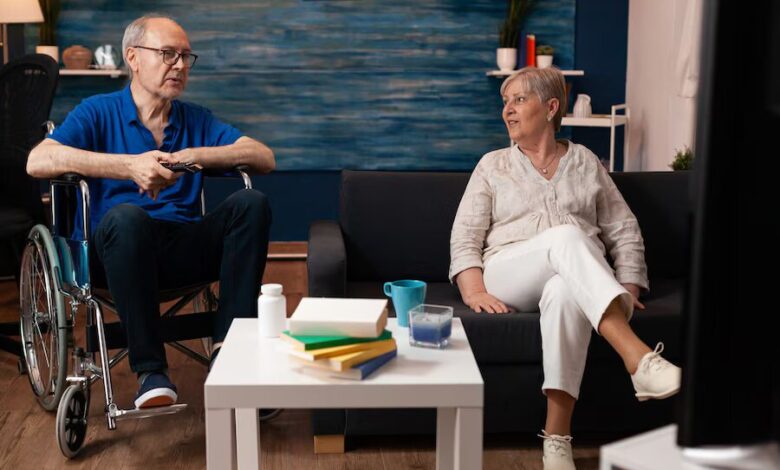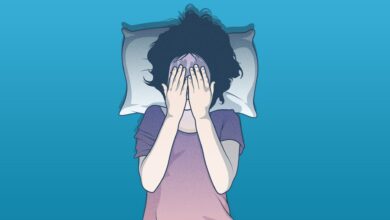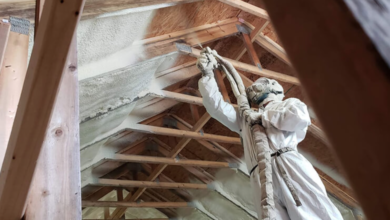How Can i Help Prevent Falls in Someone with Dementia


People with dementia have a four- to five-fold increased risk of falling compared to their cognitively well counterparts. Those who fall are at a three-fold increased risk of sustaining a fracture compared to those who are cognitively well.
How can I Help Prevent Falls for Someone with Dementia?
- Home Safety Assessment: A comprehensive examination of potential hazards in a person’s home environment: loose rugs, cluttered walkways, or poor lighting.
- Remove Obstacles: Clear pathways and remove tripping obstructions, such as electrical cords getting entangled, loose carpets overturning, and furniture barricading walking areas.
- Footwear: Encourage the individual to wear supportive, non-slip footwear indoors and outdoors, avoiding shoes with slippery soles or high heels to reduce fall risk.
- Regular Monitoring: Continuously monitor a person’s mobility and safety needs, adjust their care plan, review fall prevention strategies, address new risk factors, and use fall mats for elderly as needed to ensure their safety.
- Education and Training: Teach caregivers, family members, and the person with dementia how to prevent falls and concerns or changes in mobility. Offer training on safe transferring techniques and how to respond in the case of a fall.
- Adequate Lighting: To ensure a well-lit home, use night lights, turn on lamps in dark rooms, use glow-in-the-dark light switches, use high wattage/low energy bulbs, light up dark closets, close drapes at night and open them during the day, ensure well-lit entrances and walkways, and consider installing outdoor motion-sensor light.
- Regular Physical Activity: Promote regular physical activities like walking and low-impact aerobic exercise to enhance balance, strength, and coordination, and consult with a physical therapist to develop a specific exercise program for improved mobility and strength.
- Create Visual Contrast – To create visual contrast, use solid colours with no patterns to distinguish between objects and the background, and avoid using black surfaces, as they can be interpreted as black holes.
- Furniture Arrangement – Advises arranging furniture to create clear paths and keep frequently used items easily accessible, avoiding unnecessary movement, and avoiding light and unstable pieces, keeping furniture in consistent locations.
- Accessibility – To enhance accessibility, place essential items in plain view, use adaptive equipment, safety pressure mat, lower bed height, label cupboards, install railings, keep mobility aids close, place frequently used kitchen items in easy reach, and relocate the bedroom to the main floor near the bathroom.
- Enhance Bathroom Safety: add handrails to both sides of stairways and grab bars in the bathrooms (e.g., near the toilet and the shower). Recommendations include the following: add a non-slip bath mat; use a hand-held shower; get a bath chair or bath bench; purchase a raised toilet seat; correctly position grab bars by the tub and toilet; lower the water temperature to 48 degrees Celsius or lower; put night lights in the bathroom.
Common Causes of Falls in People With Dementia
- Physical Factors: Decreased muscle power, flexibility, and coordination lead to a fall-prone status quo. Current medical conditions like arthritis, diabetes, cardiovascular diseases, and the like are known to impair mobility and balance. Certain medications could lead to falls because of dizziness, sedation and hypotension. Hypersensitivity can also be manifest in the form of poor vision or hearing and may impair an individual spatial orientation and balance.
- Cognitive Factors: A person who cannot effectively process the environment is likely to move in an unsafe manner. Failure to use mobility aids or lack of use of safety information can heighten the possibility of a fall among elders. It will thus be seen that the various dimensions of the condition and/or the disease lead to various degrees of impaired judgment which are reflected in the body’s risky behaviors like walking while impaired.
- Behavioural Factors: Dementia sufferers may wander and pace and they can easily fall, especially in areas where loose wires or cables are lying on the floors or walkways, without anyone being around to assist immediately after the accident happens. Because they may have difficulty in voicing their needs; they may try to get up and walk on their own which may lead to falls. Accident-prone personalities often exhibit habits that involve rushing or not thinking before acting, which causes falls.
- Environmental Factors: Any form of clutter or any objects or barriers along the corridors and similar widths may pose tripping hazards. Assertive people face slipping hazards such as loose rugs on the floor, slippery floors as well as uneven terrain. The lack of such supports in some basic sectors such as the washroom area and staircases poses a high risk of falls.
Conclusion
An understanding of fall risks and prevention is crucial in the management of a person with dementia. Some interventions like home modification, use of assistive devices, exercise and evaluation schedules are common and helpful in decreasing the possibility of falls or risk factors for falls. Patient care providers, especially in the field of medicine and nursing, besides healthcare workers or managers, and occupational and physical therapists should be engaged in the establishment of a person-centred fall prevention program.








